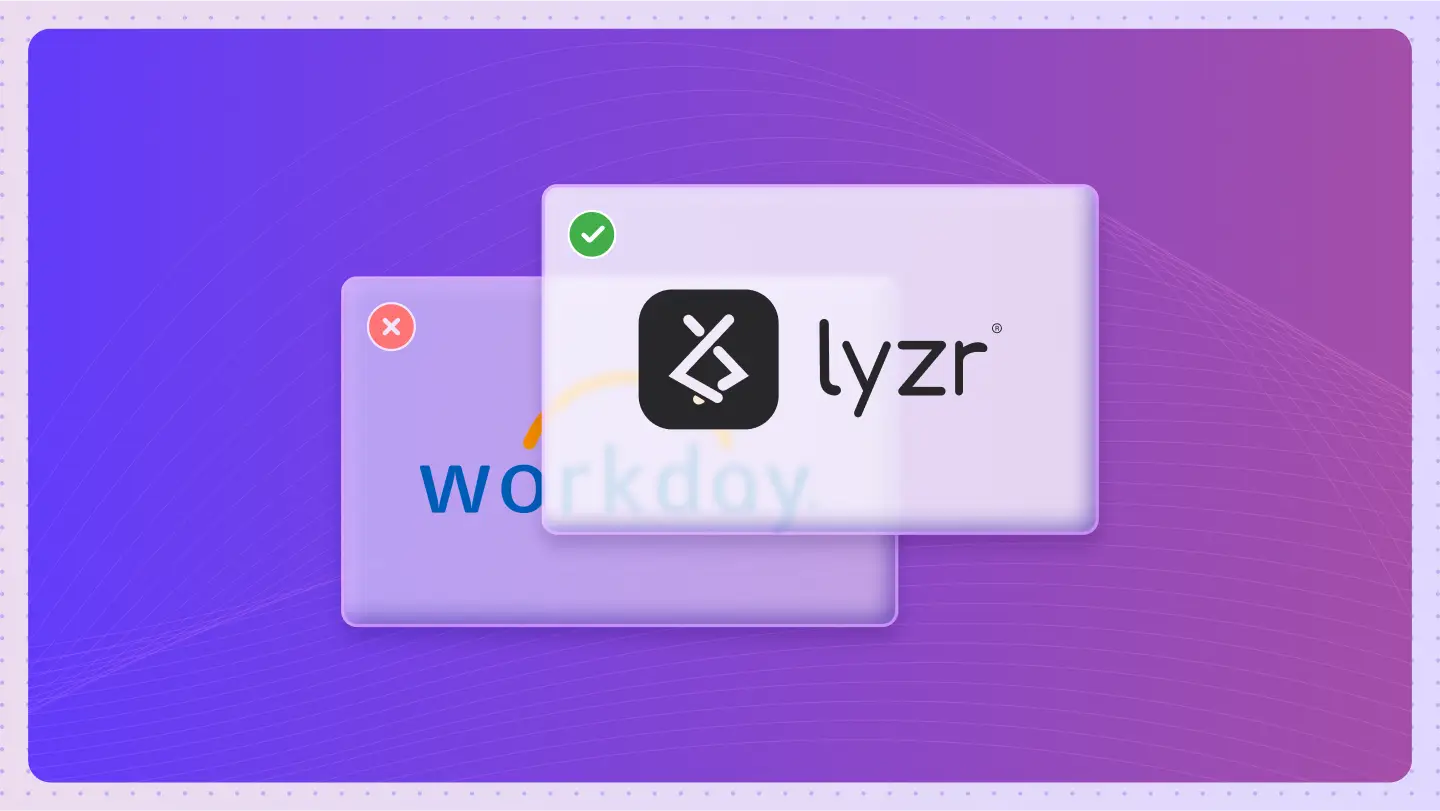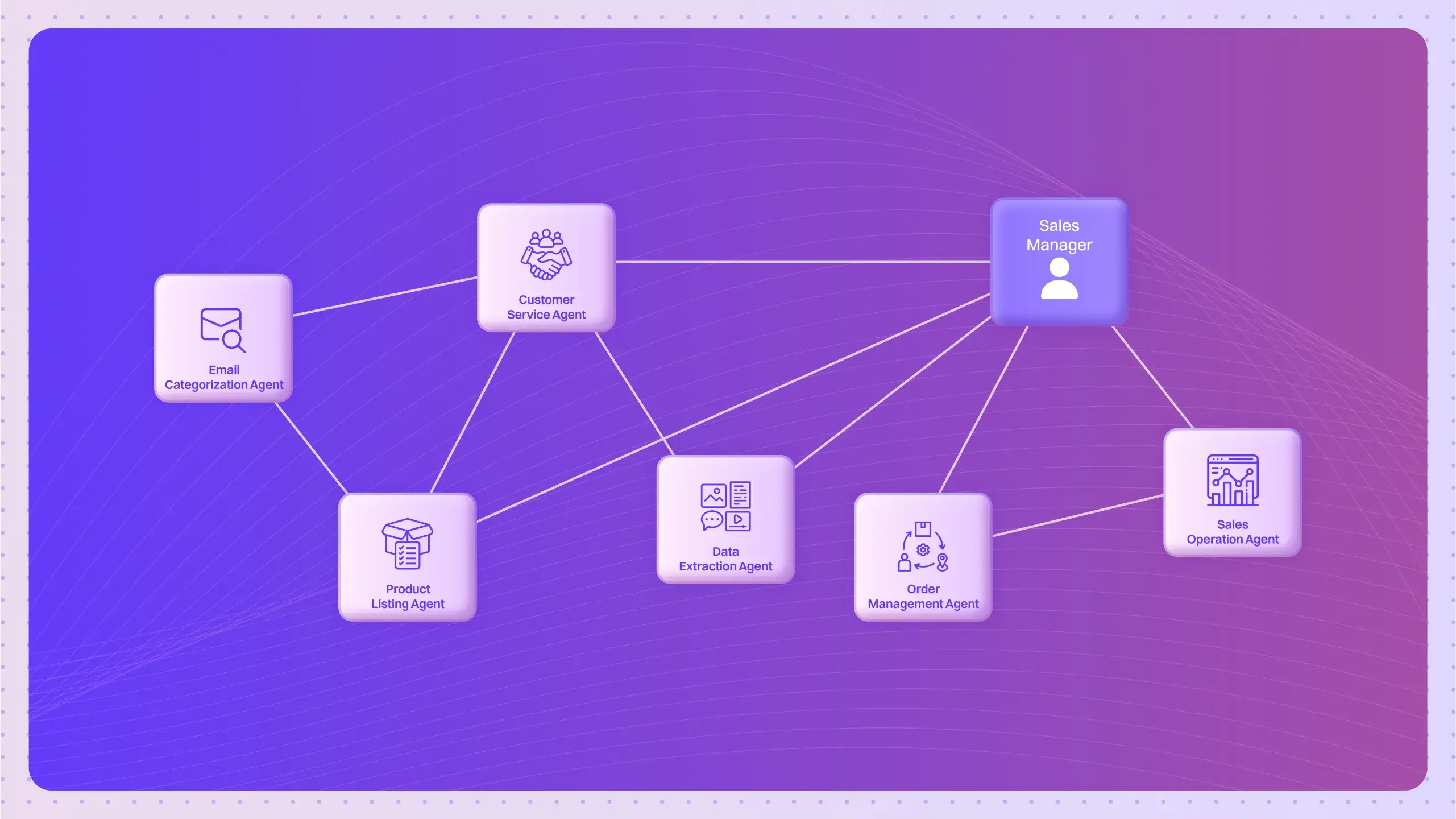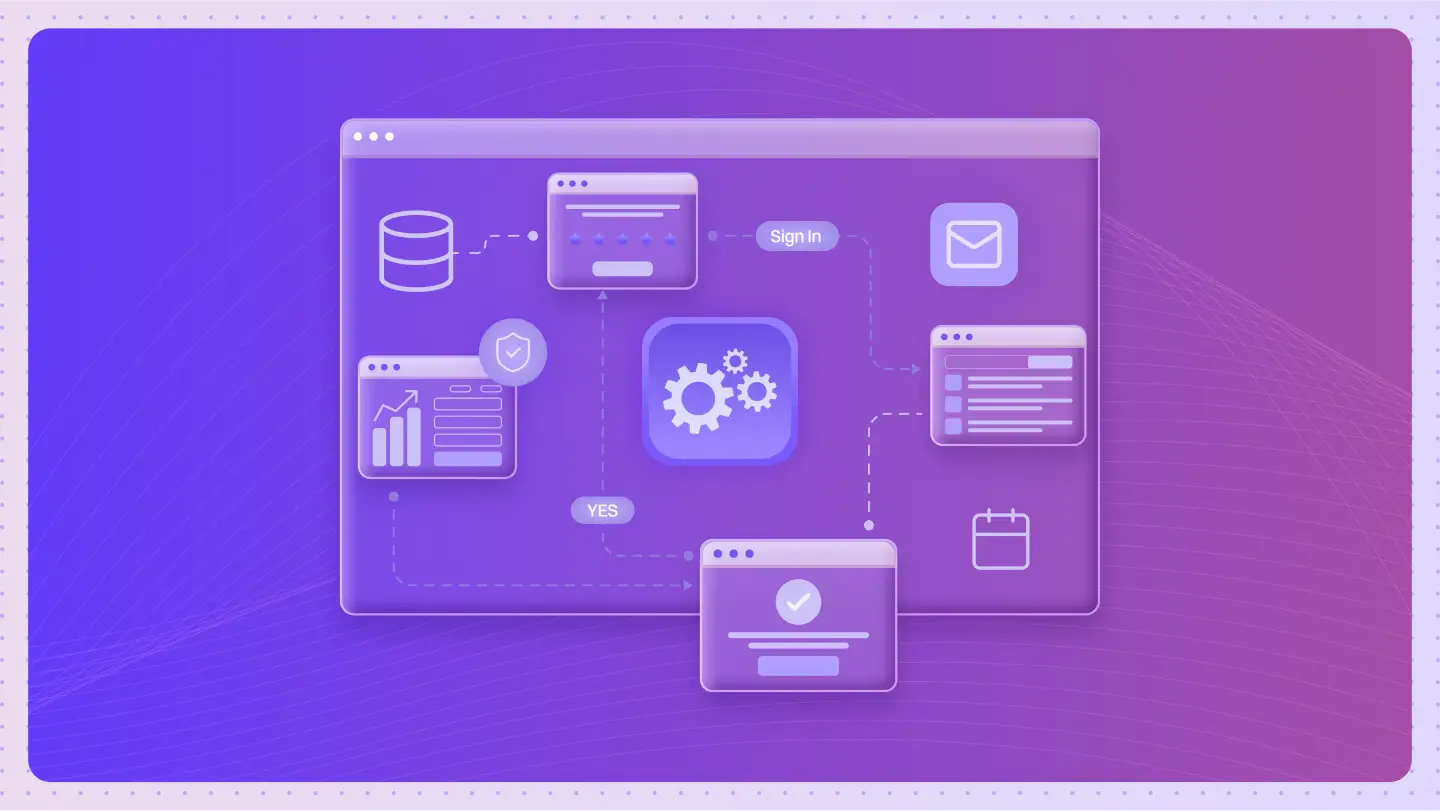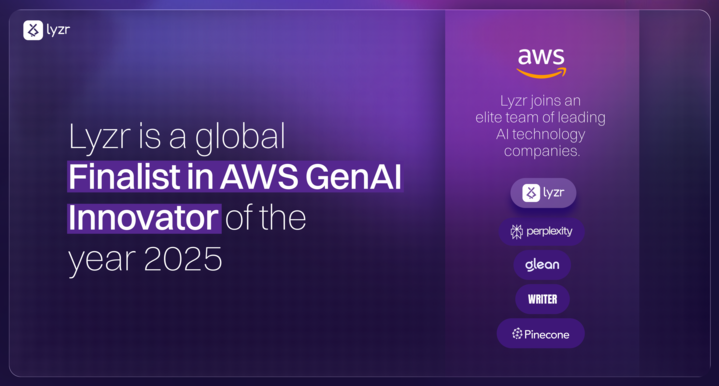What is Generative AI?
Generative AI refers to algorithms that can create new content, including text, images, and designs, by learning patterns from existing data. It enhances content creation and design by automating tasks, generating innovative ideas, and improving efficiency in various fields.
How does Generative AI Enhance Content Creation?
Generative AI operates by using algorithms to create new content based on existing data. It leverages machine learning models, particularly deep learning techniques, to understand and replicate patterns. Here’s how it functions:
- Data Input: It processes large datasets, learning from text, images, or audio to generate new content.
- Model Training: Neural networks are trained using techniques like GANs (Generative Adversarial Networks) or VAEs (Variational Autoencoders) to produce outputs that mimic human creativity.
- Content Generation: Based on the learned patterns, it can generate diverse content such as articles, music, or designs.
- Refinement: Feedback loops allow for continuous improvement of the generated content, enhancing quality and relevance.
- Applications: Used in various fields, including marketing, design, and R&D, Generative AI enables rapid prototyping, personalized content, and innovative solutions, transforming how creative professionals operate.
Common Uses and Applications of Generative AI
Generative AI is transforming various industries by enhancing content creation and design processes. It leverages advanced algorithms to produce original content, visuals, and models, streamlining workflows for creative professionals and R&D teams. Key applications include:
- Content Creation: Automates writing and editing, generating articles, blogs, and marketing material.
- Graphic Design: Assists in producing unique images and layouts, optimizing design workflows.
- Video Production: Creates scripts and edits footage, enhancing storytelling in films and advertisements.
- Game Development: Generates characters and environments, accelerating the game design process.
- Music Composition: Composes original music tracks, aiding musicians and sound designers.
- Product Design: Facilitates rapid prototyping and model generation in various industries.
- Research and Development: Analyzes data and generates hypotheses, improving innovation cycles.
- Virtual Reality: Creates immersive environments and experiences, enhancing user engagement.
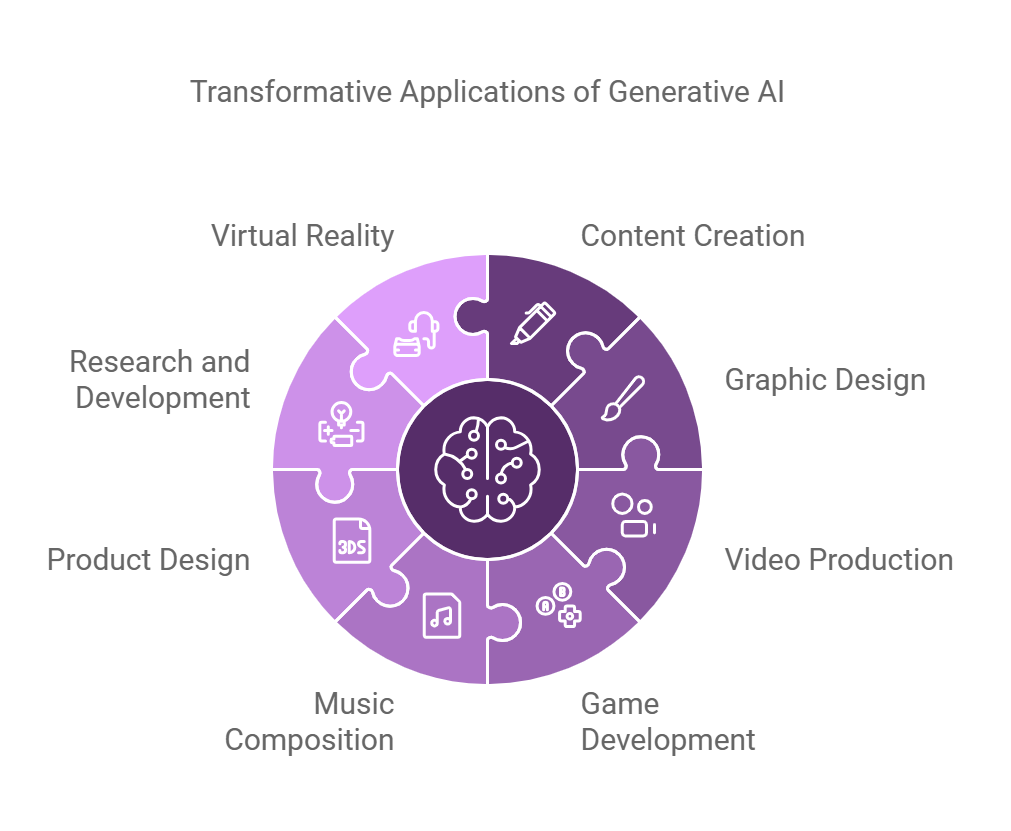
Advantages of Using Generative AI
Generative AI is revolutionizing content creation and design across various industries. Its ability to enhance creative processes and generate innovative models makes it invaluable. Here are some key benefits:
- Efficiency: Reduces time spent on repetitive tasks, allowing creators to focus on innovation.
- Creativity Boost: Generates unique ideas and designs, inspiring content creators.
- Customization: Tailors content to specific audiences, enhancing engagement.
- Scalability: Produces large volumes of content without compromising quality.
- Cost-Effective: Minimizes resource allocation for traditional content creation processes.
- Interdisciplinary Applications: Utilized in fields like art, music, marketing, and product design.
- Data-Driven Insights: Leverages data to inform creative decisions, improving outcomes.
By integrating Generative AI into workflows, creative professionals can unlock new levels of productivity and innovation.
Drawbacks and Limitations of Generative AI
While Generative AI offers many benefits, it also has limitations such as:
- Potential for biased outputs due to training data.
- High computational requirements.
- Difficulty in generating original content without human input.
- Complexity in fine-tuning models for specific needs.
These challenges can impact the reliability and quality of generated content, requiring careful oversight.
Real-Life Examples of Generative AI in Action
For example, Generative AI is used by the entertainment industry to create scripts and storyboards. A major film studio employed Generative AI to develop plot ideas, resulting in improved creativity and reduced brainstorming time. This demonstrates how AI can augment human creativity in storytelling.
How does Generative AI Compare to Similar Technologies?
Compared to traditional AI, Generative AI differs in its ability to create new content rather than just analyze existing data. While traditional AI focuses on data interpretation and classification, Generative AI is more effective for producing original images, texts, or designs, making it invaluable for creative professionals.
Future Trends for Generative AI
In the future, Generative AI is expected to evolve by incorporating more advanced algorithms, improving user interfaces, and integrating with other technologies like augmented reality. These changes could lead to more personalized content creation and broader applications across various industries, enhancing collaboration between humans and AI.
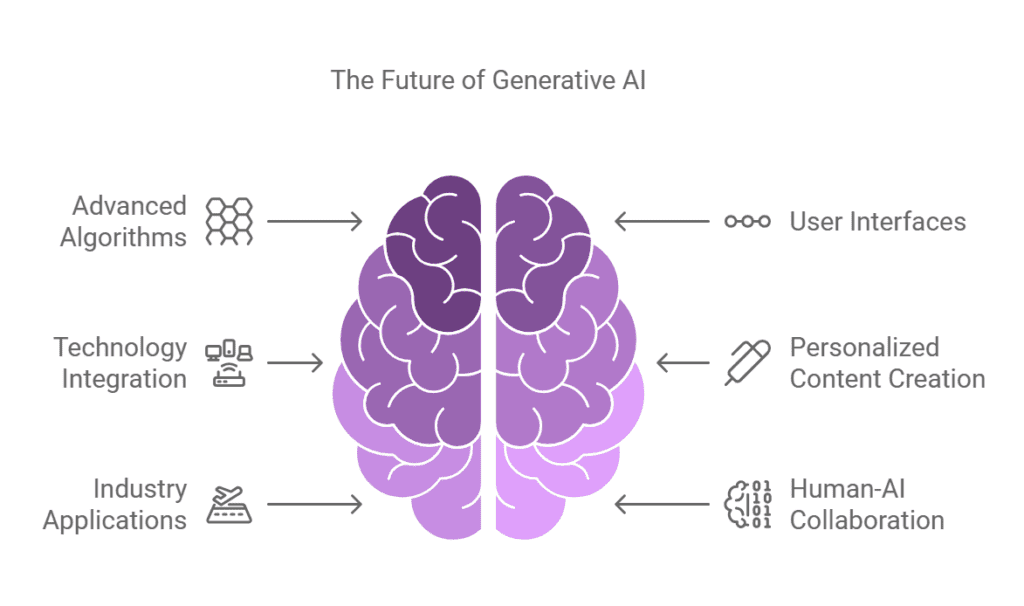
Best Practices for Using Generative AI Effectively
To use Generative AI effectively, it is recommended to:
- Start with high-quality training data.
- Continuously refine models based on feedback.
- Collaborate with human experts to review outputs.
- Experiment with different algorithms for desired results.
Following these guidelines ensures reliable and relevant content generation.
Case Studies Demonstrating Successful Implementation of Generative AI
One case study involves a marketing agency that implemented Generative AI to create ad copy and social media content. The results showed a 30% increase in engagement rates and a 20% reduction in content creation time. This case highlights the benefits of incorporating Generative AI into marketing strategies for improved outreach.
Related Terms to Understand along with Generative AI
Related terms include:
- Machine Learning: The foundation of Generative AI algorithms.
- Deep Learning: A subset of machine learning that powers advanced generative models.
Understanding these terms is crucial for grasping how Generative AI operates and its applications in creative fields.
Step-by-Step Instructions for Implementing Generative AI
Generative AI refers to algorithms that can create content, designs, or models. Here’s a simplified process:
- It uses existing data to generate new outputs, making it valuable for creative professionals.
- It can generate text, images, or music based on input, helping creators focus on more complex projects.
Frequently Asked Questions
How does Generative AI support content creators?
Generative AI assists content creators by providing inspiration and automating tasks. It can generate text, images, or music based on input, allowing creators to focus on more complex projects.
What are the benefits of Using Generative AI in creative tasks?
Using Generative AI in creative tasks offers several advantages:
- It saves time by automating repetitive tasks, allowing creatives to explore new ideas and concepts.
What are the fields where Generative AI can be applied?
Generative AI has applications across various fields, including art, design, music, and literature, as well as in R&D for prototyping and modeling.



